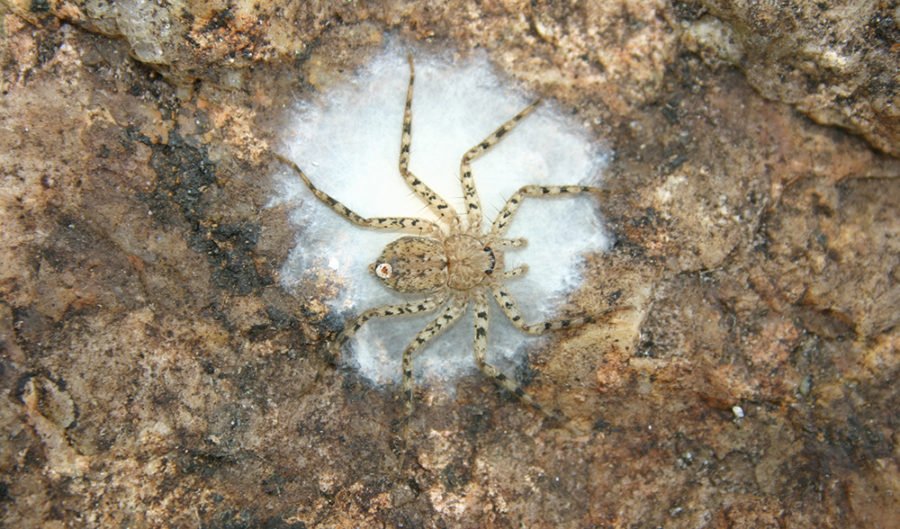Is this the world’s fastest lunging predator?

A SMALL, FLAT species of spider found only in Australia, known as Karaops, is being studied to see if it is the world’s fastest lunging predator.
Californian researcher and spider expert, Dr Sarah Crews, recently spent 60 days trekking through central and northern Australia collecting samples to take back to the United States.
“We are really interested in how they move,” Sarah told the ABC.
“Sort of accidentally we noticed that they are very fast at striking their prey, and it may be that they are the fastest terrestrial ambush predator on Earth.”
RELATED: 7 new species of peacock spiders discovered
Sarah drove from northern Western Australia through to the Northern Territory visiting remote rocky locations to find a variety of specimen samples.
“You drive every day, drive into the night, set up camp and go to sleep and you do it again,” she said.
“Sometimes we can’t find the locality where specimens have been found before, because the information was poor, and a lot of times we can’t get to the site due to mining, so that makes it difficult.”
RELATED: Australia’s 10 most dangerous spiders
Having now collected more than 100 samples to take back to the United States, Sarah will examine and film the spiders lunging at their prey, in order to record their speed.
“Most spiders are thought to move with hydraulic pressure, but some studies from Germany have shown some spiders are too big or too fast, they aren’t moving with hydraulic pressure, so there has to be a muscular component as well,” she said.
“We’re trying to work out the mechanism behind how they can move so fast, whether it’s hydraulic pressure coupled with muscles, or whether there’s some sort of trigger for a huge release of energy. We’re just not really sure yet.”
Fast and hidden
In 2009, Sarah spent a year based at the Western Australian Museum, naming hundreds of spider species that were previously unrecognised.
The museum’s head of terrestrial zoology Dr Mark Harvey said that Sarah’s research was incredibly significant.
“Flat spiders, of the family Selenopidae, are certainly one of the fastest spiders in the world. They live under rocks or under bark of trees, and move so fast they are incredibly hard to observe.”
“There are numerous species of flat spiders in Australia and elsewhere in the world, and the arid regions of Australia seems to have a high diversity of species. However, they are rarely seen by most people, as they stay hidden under rocks.”
READ MORE:
- This is why you should love spiders
- Hidden housemates: Australia’s huge and hairy huntsman spiders
- Hidden housemates: The redback spider

